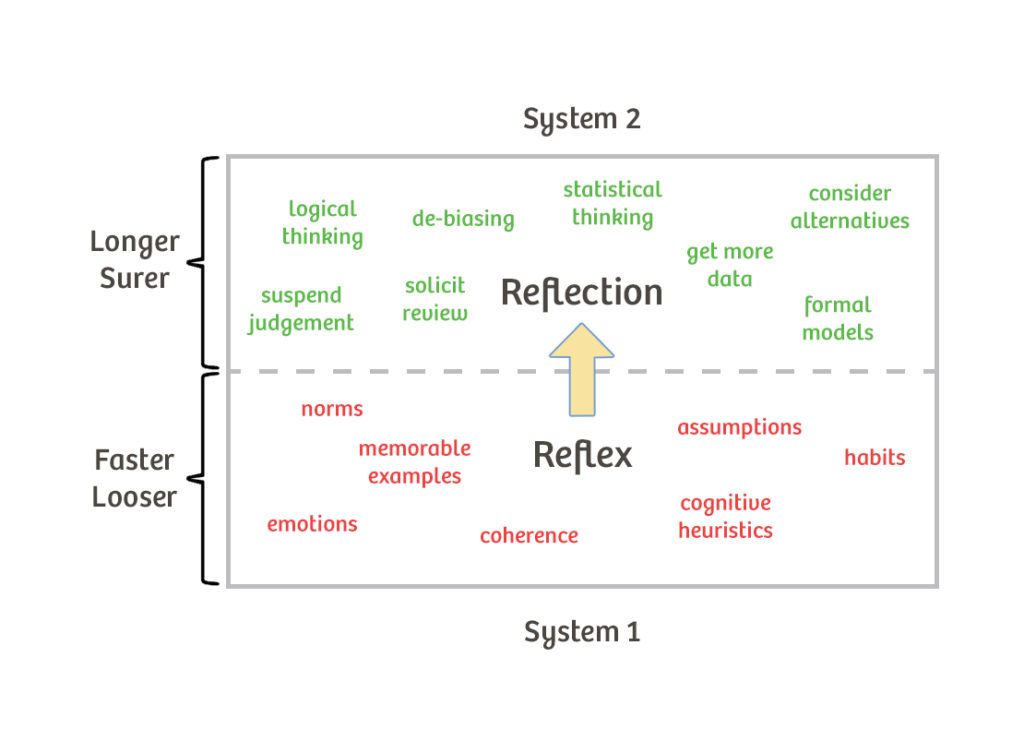What It Is:
“Thinking, Fast and Slow” is a book written by Daniel Kahneman, a Nobel Prize-winning psychologist and economist. The book was published in 2011 and is a comprehensive exploration of the two systems that drive the way people think: System 1 and System 2.
- System 1:
- Description: Fast, intuitive, and automatic thinking. It operates effortlessly and quickly, relying on heuristics and biases.
- Example: Recognizing familiar faces, solving simple math problems.
- System 2:
- Description: Slow, deliberate, and analytical thinking. It requires effort, conscious reasoning, and is often employed for complex tasks.
- Example: Solving complex math problems, critical thinking, decision-making.
How to Use It:
Using “Thinking, Fast and Slow” in Agile Coaching:
- Understanding Decision-Making:
- Agile teams often make decisions collaboratively. Understanding the interplay between System 1 and System 2 thinking can help team members be aware of their cognitive biases and make more informed decisions.
- Risk Management:
- System 1 thinking can lead to biases and overreliance on intuition. When dealing with risk management or complex problems, encourage the team to engage in System 2 thinking for thorough analysis.
- Retrospectives:
- Use insights from the book to structure retrospectives. Discuss how biases might have influenced past decisions and explore ways to incorporate more deliberate thinking in future iterations.
- Product Development:
- When considering features or changes to a product, use the book’s concepts to guide discussions. Evaluate whether decisions are driven by intuitive thinking (System 1) or careful analysis (System 2).
Understanding how people think and make decisions is crucial in Agile settings where collaboration and effective decision-making are key components of success. “Thinking, Fast and Slow” provides a valuable framework for navigating the complexities of human cognition in various contexts, including Agile software development and product management.
References:
- “Thinking, Fast and Slow” by Daniel Kahneman:
- The book itself is a valuable resource, providing detailed explanations, examples, and case studies that illustrate the concepts of System 1 and System 2 thinking.
- Author’s Talks and Interviews:
- Daniel Kahneman has given talks and interviews discussing the ideas presented in the book. Watching or reading these discussions can deepen your understanding and provide practical applications.
- Applied Psychology and Decision-Making Courses:
- Consider exploring courses or resources in applied psychology and decision-making. Many educational platforms offer courses that draw on Kahneman’s work.
- Incorporate into Training Programs:
- If you conduct training sessions for Agile teams, consider incorporating elements from “Thinking, Fast and Slow” to enhance the team’s awareness of cognitive biases and improve decision-making processes.
Visit the Agile Coach’s Toolkit for more definitions, models, theorems and stuff.

